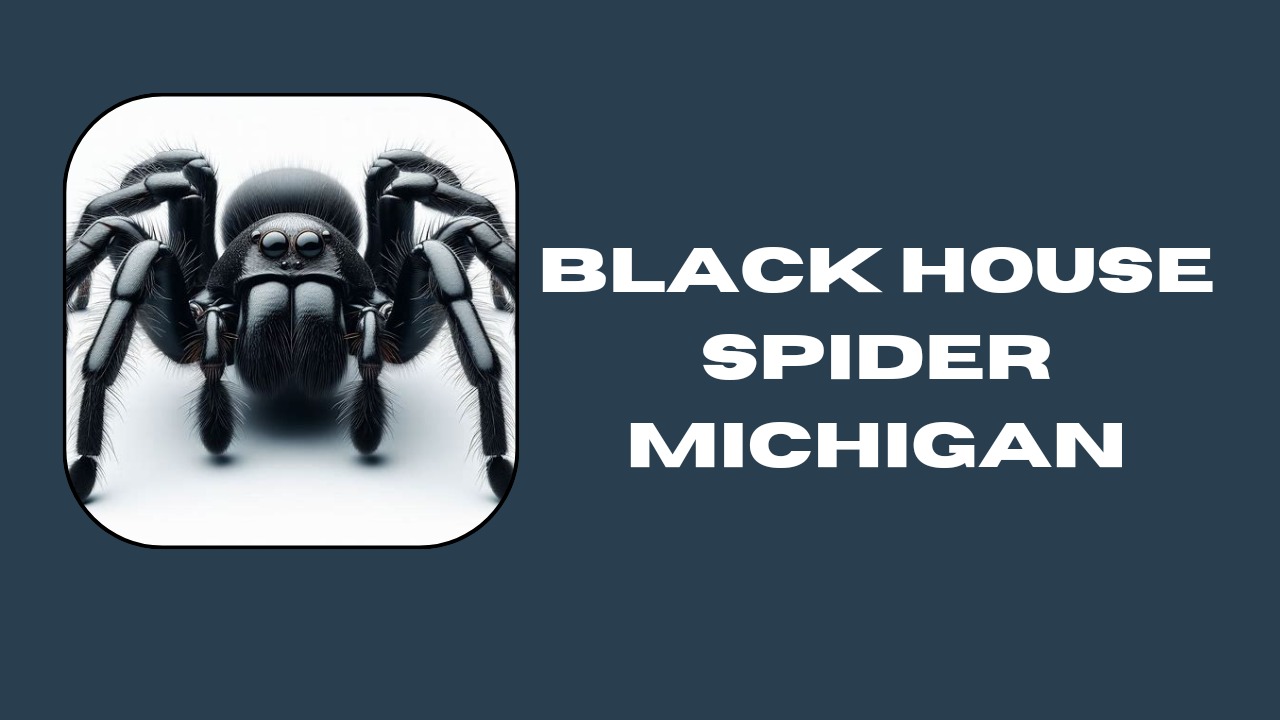
1, Jan 2024
Black House Spider Michigan
Many species of wildlife, including the frequently disregarded black house spider, can be found in Michigan, a state rich in natural diversity. We examine the traits, habits, and cohabitation techniques unique to the black house spider in Michigan in this investigation, illuminating the species’ crucial function in the regional ecology.
Identification and Characteristics:
Physical Features of Black House Spiders in Michigan
In the corners and crevices of Michigan homes, the black house spider boasts a distinctive appearance. Sized from small to medium, these spiders exhibit a dark coloration that aids in their discreet presence. Examining their intricate web structures reveals the unique patterns that set them apart in the local arachnid community.
Habitat and Distribution:
Preferred Environments for Black House Spiders in Michigan
From urban homes to rural landscapes, black house spiders in Michigan exhibit adaptability. Outside they are happy in gardens, sheds, and beneath rocks; indoors they prefer dark, enclosed spaces such as attics and basements. They are distributed throughout the state, adapting to the various environments and climates Michigan has to offer.
Behavior and Diet:
Hunting and Feeding Habits Specific to Black House Spiders in Michigan
The local black house spiders engage in subtle yet effective hunting strategies. They are essential to preserving the equilibrium of the local insect population because they wait patiently for prey in their webs. Their main source of food is typical household pests, which helps to maintain a healthier atmosphere.
Interactions with Other Species in the Local Ecosystem
In the complex predator-prey dance that occurs in Michigan’s environment, these spiders live with a variety of other insects. Their interactions show a remarkable network of relationships, each of which contributes to the environment’s overall balance.
Venom and Potential Harm:
Overview of Venomous Characteristics of Black House Spiders in Michigan
While possessing venom, Michigan’s black house spiders are not considered highly venomous to humans. The venom aids in subduing prey rather than posing a significant threat to residents.
Assessment of Potential Harm to Humans and Pets
Instances of bites are rare, and their effects are generally mild. It is sufficient to use a cold compress and clean the bitten area as first aid. It is best to seek medical assistance only in rare instances of severe reactions.
First Aid and Precautions Specific to the Local Species
Understanding local first aid measures is crucial. A Michigan-specific approach to dealing with bites involves prompt and proper wound care, minimizing any potential discomfort.
Coexistence and Pest Control:
Tips for Coexisting with Black House Spiders in Michigan
Michigan residents can adopt simple practices to coexist harmoniously with black house spiders. Regular cleaning, reducing clutter, and sealing entry points help create an environment where both residents and spiders can thrive.
Non-lethal Methods of Pest Control Fit for the Local Species
Non-lethal pest management solutions are beneficial for individuals looking to strike a balance between a spider-friendly atmosphere and a pest-free home. Natural repellents and traps offer solutions that protect the health of the local population as well as spiders.
Common Misconceptions:
Dispelling Myths Related to Black House Spiders in Michigan
Myths often cast these spiders in an undeserved negative light. By providing accurate information, we aim to dispel misconceptions and foster a more informed and appreciative perspective on Michigan’s black house spiders.
Clarifying Their Role in the Local Ecosystem
Thanks to their ability to regulate insect populations, these spiders are essential to the ecosystems of Michigan. A positive perspective on their existence and contribution to the community is fostered by highlighting their significance.
Conclusion:
As we unravel the story of the black house spider in Michigan, we find a creature intricately connected to its surroundings. Understanding their characteristics, behaviors, and the local adaptations that shape them allows residents to coexist in harmony. Michigan’s black house spiders are not just residents; they are contributors to the delicate balance of nature in our great state.
- 0
- By Faizan Khan






